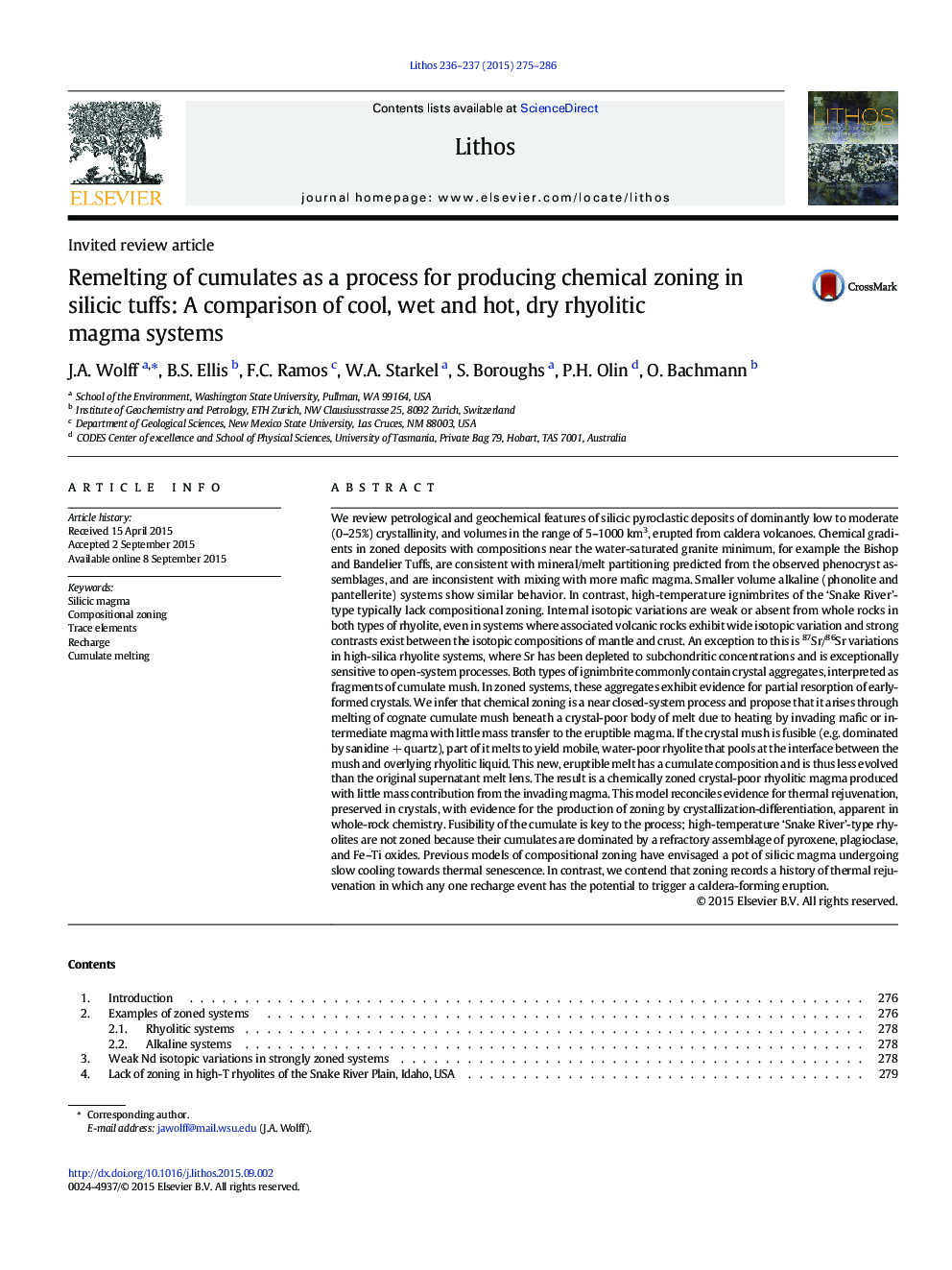| کد مقاله | کد نشریه | سال انتشار | مقاله انگلیسی | نسخه تمام متن |
|---|---|---|---|---|
| 4715592 | 1638656 | 2015 | 12 صفحه PDF | دانلود رایگان |
• Zoned crystal-poor silicic tuffs display chemical variations consistent with their phenocryst assemblage.
• They also exhibit textures and mineral-scale variations consistent with recharge.
• Last-erupted portions contain crystal aggregates interpreted as fragments of crystal mush.
• Isotopic variations indicate limited mantle–crust mass transfer in the formation of zoning.
• High-T rhyolites are unzoned, and have mafic crystal aggregates.
• These observations are reconciled in a model where crystal mush is melted by recharging magma, supplying melt of accumulative composition which pools below the eruptible magma, forming a zoned magma body.
• Cumulate fusibility is key to the process: cumulates from high-T rhyolites are too refractory to melt, hence these tuffs are not zoned.
We review petrological and geochemical features of silicic pyroclastic deposits of dominantly low to moderate (0–25%) crystallinity, and volumes in the range of 5–1000 km3, erupted from caldera volcanoes. Chemical gradients in zoned deposits with compositions near the water-saturated granite minimum, for example the Bishop and Bandelier Tuffs, are consistent with mineral/melt partitioning predicted from the observed phenocryst assemblages, and are inconsistent with mixing with more mafic magma. Smaller volume alkaline (phonolite and pantellerite) systems show similar behavior. In contrast, high-temperature ignimbrites of the ‘Snake River’-type typically lack compositional zoning. Internal isotopic variations are weak or absent from whole rocks in both types of rhyolite, even in systems where associated volcanic rocks exhibit wide isotopic variation and strong contrasts exist between the isotopic compositions of mantle and crust. An exception to this is 87Sr/86Sr variations in high-silica rhyolite systems, where Sr has been depleted to subchondritic concentrations and is exceptionally sensitive to open-system processes. Both types of ignimbrite commonly contain crystal aggregates, interpreted as fragments of cumulate mush. In zoned systems, these aggregates exhibit evidence for partial resorption of early-formed crystals. We infer that chemical zoning is a near closed-system process and propose that it arises through melting of cognate cumulate mush beneath a crystal-poor body of melt due to heating by invading mafic or intermediate magma with little mass transfer to the eruptible magma. If the crystal mush is fusible (e.g. dominated by sanidine + quartz), part of it melts to yield mobile, water-poor rhyolite that pools at the interface between the mush and overlying rhyolitic liquid. This new, eruptible melt has a cumulate composition and is thus less evolved than the original supernatant melt lens. The result is a chemically zoned crystal-poor rhyolitic magma produced with little mass contribution from the invading magma. This model reconciles evidence for thermal rejuvenation, preserved in crystals, with evidence for the production of zoning by crystallization-differentiation, apparent in whole-rock chemistry. Fusibility of the cumulate is key to the process; high-temperature ‘Snake River’-type rhyolites are not zoned because their cumulates are dominated by a refractory assemblage of pyroxene, plagioclase, and Fe–Ti oxides. Previous models of compositional zoning have envisaged a pot of silicic magma undergoing slow cooling towards thermal senescence. In contrast, we contend that zoning records a history of thermal rejuvenation in which any one recharge event has the potential to trigger a caldera-forming eruption.
Journal: Lithos - Volumes 236–237, November 2015, Pages 275–286
